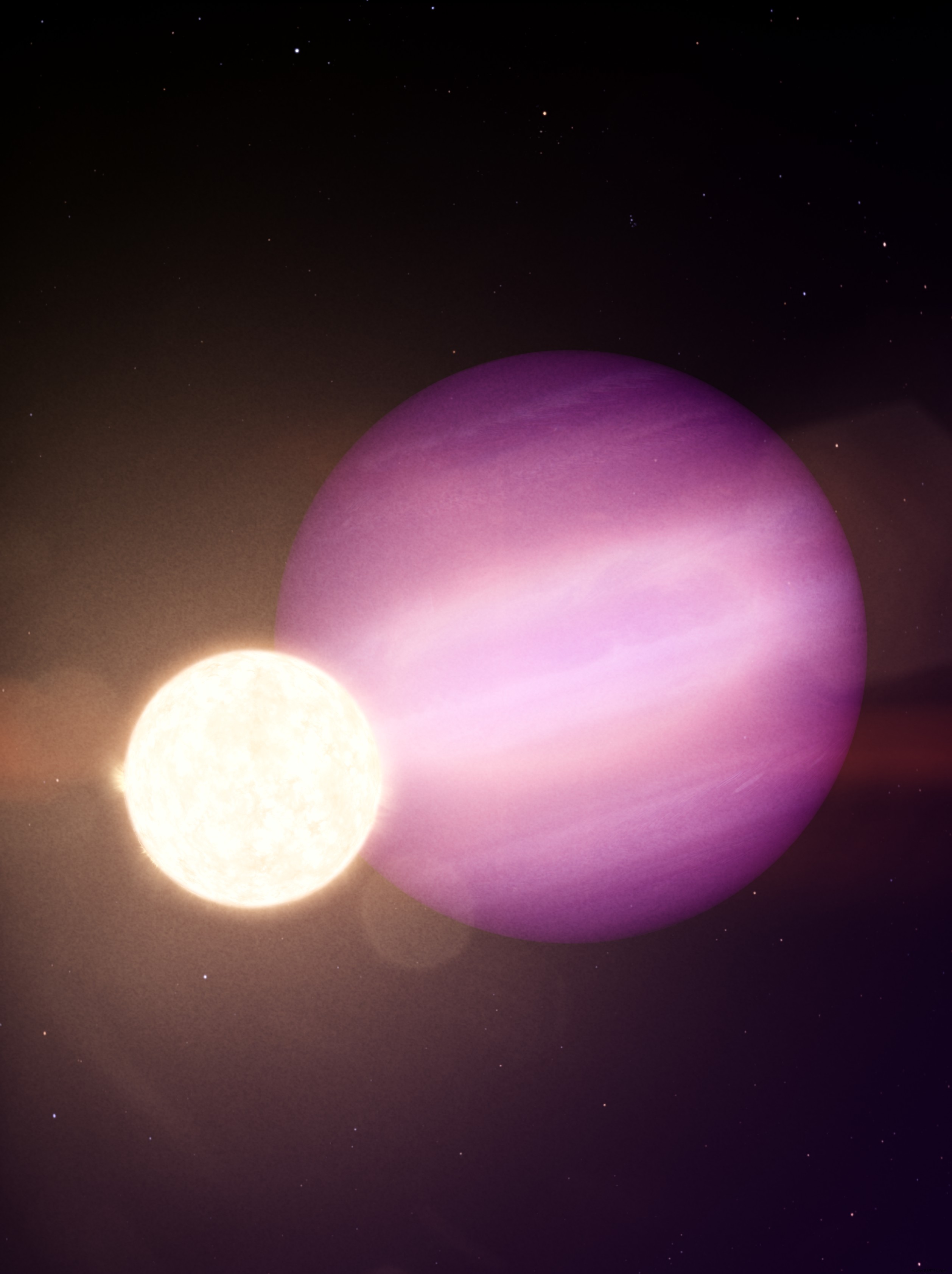A team of astronomers announces the discovery of a huge, still intact planet orbiting around a much smaller white dwarf. A first which, according to the researchers, opens up a whole new field of exoplanetary research.
As a Sun-type star ages, it begins to swell until it becomes a red giant. When it reaches the end of its life, the star finally expels its outer layers of gas, losing up to 80% of its mass. It then leaves behind only a dense core, a stellar corpse called a "white dwarf". This is how our Sun will end in about ten billion years.
During this process, all nearby objects are usually engulfed and reduced to ashes. In our system, we know for example that Mercury, Venus, Earth and probably Mars will be swallowed up by the Sun in a few billion years. Hence the interest of this new discovery.
Thanks to the TESS satellite and the Spitzer telescope, NASA astronomers claim to have identified an intact planet evolving very close to a white dwarf . Details of their work are published in the journal Nature .
Called WD 1856 b, this Jupiter-sized planet is about seven times larger than the white dwarf (WD 1856+534), a distant member of a three-star system that is only 40% larger than Earth . This planet circles it every 34 hours , more than sixty times faster than Mercury orbits our Sun. You will find all these beautiful people about eighty light-years away , in the constellation of the Dragon.

The question is:how could such a planet end up there? "The white dwarf creation process normally destroys nearby planets, and anything that comes closer later is usually torn apart by the star's immense gravity “, recalls Andrew Vanderburg, of the University of Wisconsin-Madison. "Gold, WD 1856 b, although very close to its white dwarf, nevertheless manages to remain in one piece “.
For the researchers, WD 1856 b was originally intended to orbit in an orbit at least fifty times farther from its current location . It therefore got closer to its star afterwards, in one way or another, once it went from a red giant to a white dwarf. As to why and how, researchers still don't know, but they suspect a game of interactions with other planets.
In an independent commentary, Steven Parsons of the University of Sheffield said the discovery gave us "the tantalizing prospect of detecting additional worlds in this system in the future “.
WD 1856+534 is only 82 light years away, so the gravitational effects of these potential other planets on the white dwarf could indeed be detectable from Earth. “So this system opens up a whole new field of exoplanetary research “, he concludes.